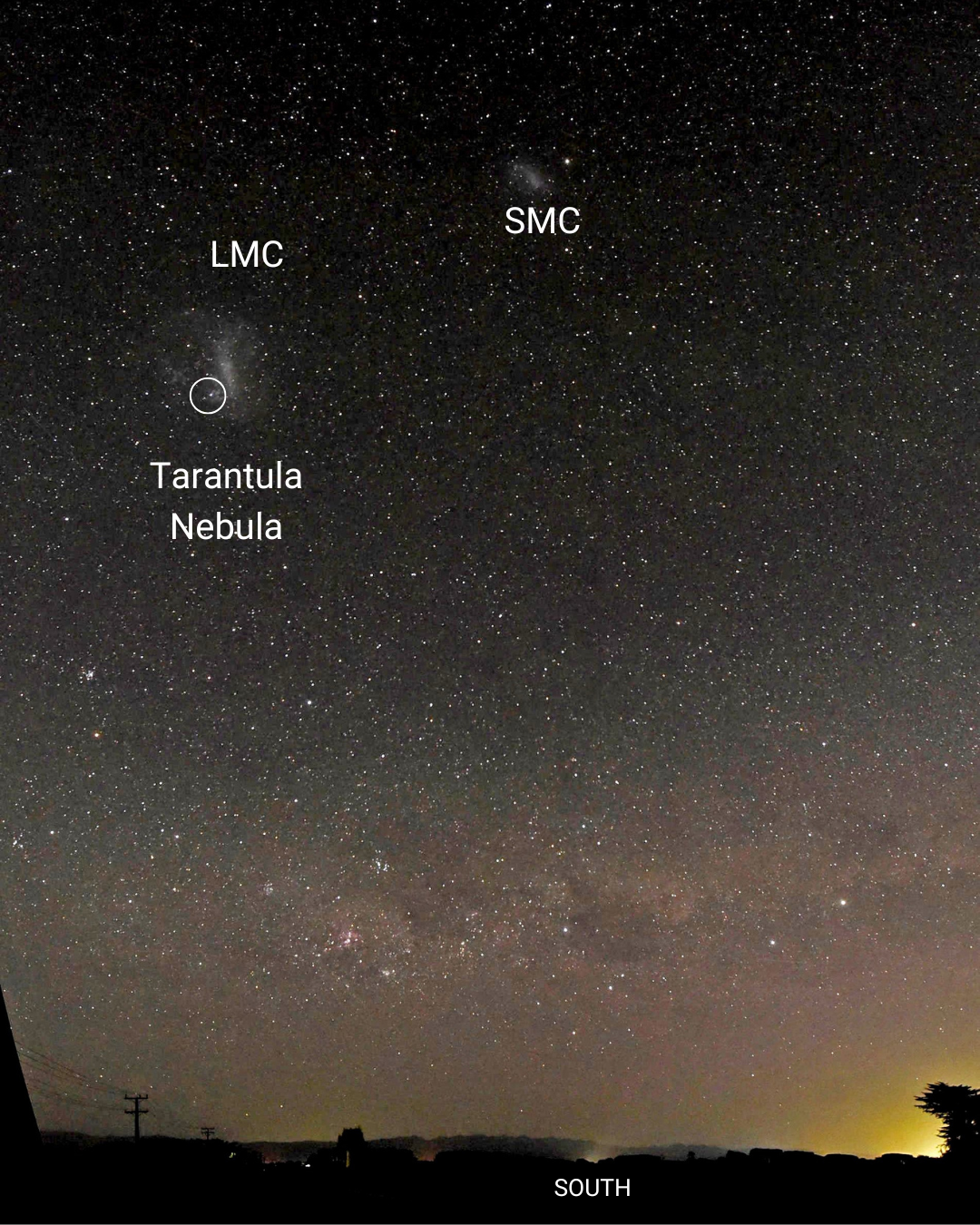
Astronz Object of the Week: The Tarantula Nebula 🕷✨
If you’ve ever wondered what a truly massive star-forming region looks like, look no further than the Tarantula Nebula (NGC 2070). This cosmic beast is the most active star factory in the Local Group of galaxies, outshining even the famous Orion Nebula.
A Giant Among Nebulae
Located 160,000 light-years away in the Large Magellanic Cloud, the Tarantula Nebula sprawls across 1,000 light-years of space. If it were as close to us as the Orion Nebula, it would cast shadows on Earth!
This nebula is home to R136, a young cluster of some of the hottest, most massive stars in the universe—each pumping out extreme ultraviolet radiation and stellar winds that sculpt the surrounding gas into intricate webs, just like a tarantula’s lair.
See It For Yourself
While not visible to the naked eye, the Tarantula Nebula is a spectacular target for binoculars and telescopes in the Southern Hemisphere. A small telescope will reveal a hazy patch, while larger scopes will start to resolve its complex, web-like structure.
Where to Look:
- Constellation: Dorado
- Best Time to Observe: Summer in the Southern Hemisphere (December–February)
- Equipment: 10x50 binoculars for a faint glimpse, a telescope for more detail
Tarantula’s Extreme Stars
This nebula isn’t just a beautiful sight—it’s a powerhouse of science. The Tarantula Nebula hosted Supernova 1987A, the closest supernova observed in modern times. It’s also home to some of the most massive known stars, including R136a1, which is over 200 times the mass of the Sun!
Astrophotography Challenge 📸
If you have an astro camera, the Tarantula Nebula is an exciting deep-sky target. A DSLR or planetary camera with a longer exposure will reveal its glowing tendrils of hydrogen gas. Try narrowband filters (Hα and OIII) for a stunning contrast.
🌌 Will you be observing the Tarantula Nebula this week? Let us know in the comments or share your images!
